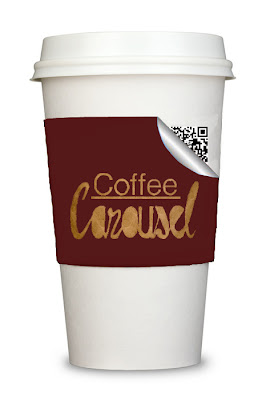"Rules are what the artist breaks; the memorable never emerged from a formula." - Bill Bernbach began a creative revolution changing the face of the advertising and graphics industry. The 50s and 60s were dominated by consumer culture, possessions were more important than anything else. After the Wall Street Crash of 1929 and the subsequent Depression, America was constantly stimulated to buy, conditioned to appreciate the joy of material things. This created a consumerist society, form followed function, form drives the desire to buy. A classic example of this is the Nash advert.
Visual Language, and Design and Composition
The advert claims that only true happiness comes from ownership of this car. With this car you can be the top of your class, show off infront of your neighbours. Buy Big.

You can't get better, its the newest so its got to be the best..right?
So new no-one will have it...yet.
So new no-one will have it...yet.
The holiday your going on won't be as good or as flash as this car, this drive will be the best part about it. But what a con because its not necessarily going to be the most comfortable or safest or best journey you could make but you show off while your doing it.
All of these adverts use all the space, bright colours and clutter the page with this american dream lifestyle endorsing a disposable society. Our enormously productive economy demands that we make consumption our way of life that we convert buying and use of goods into a ritual.
Bill Bernbach was sick of this narcissistic industry that is supposed to be about creation, but instead cons people and slowly begins to turn them against advertising all together. Paul Rand and Bernbach joined forced starting their own company with the first art director to copywriter equal collaboration. DDB created graphics that dealt with real life, what they were going through, not having all this money you were supposed to have. DDB empathised with their audience, and this is how they changed everything.
Audience and Context
The Volkswagen Beatle was actually designed by Hitler, and in 1959 DDB were brought in to advertise it. DDB began in New York a predominantly Jewish City, so how do you sell a Nazi car to Jews? By recognising who the audience was and respecting them. Instead of bullshitting, just telling the truth.
Yes it was designed by Hitler, but its actually a pretty decent car.
The photograph is of one of the cars from the production line that didn't make it, due to a imperfection on one of the doors. Lemon an insult in america was thus used to describe it, it was useless - a lemon. The advert was a double entendre, open, honest and funny. The first ad of its kind.
Visual Language, and Design and Composition
Many more ads of this original style were then created
This style is still rarely used today, as clients hate to pay for space that isn't being used. But how much more effective is this. By placing the product at a distance on a sea of white space, it encourages you to focus on the car, there is nothing else to distract you. The car is small, its not flashy, but why not.
Less is more.
Also due the era this advert was fairly controversial, going against everything every other company has been trying to tell you...think big. DDB recognised the american dream didn't really exist and not everyone can afford the luxuries that they were supposed to have. Why not think small.
In 20 years the car barely changes, no need for adjustment or alteration like all the fancy cars that come out. This is perfect as it is.
Making a comment on 50s society, if you're trying to impress by having a big car, big house ect but maybe can't afford it. Get the Beatle it will at least make your house look like its bigger.
Creative Thinking
By looking at the context of the time in which we are designing for we can understand the needs of our audience and create something which has a direct appeal.
Cadburys' - Gorilla - "A glass and a half full of joy."
At the beginning of 2007 sales of cadbury's chocolate plummeted as their unhygienic method of storage caused a contamination in their chocolate, causing an outbreak of salmonella. Cadbury's needed something new to get their name back out there amongst trusted products. People remember eating Cadburys chocolate when they were younger, and have fond associations of these memories, so ad agency Fallon were briefed to "Bring back the joy". Juan Cabral using the style of classic DDB did this in the direction of the now legendary commercials.
This style of advertising is so effective it doesn't ram information down your throat or force you to accept a brand. Fallon with Cadburys like DDB create humour and entertainment. Memorable advertising, make the audience think and appreciate the idea, and the function of the product your selling. (DDB Volkswagen Beatle advert -
"How does the man who drives the snowplow get to the snowplow?" )
Bernbach is a design hero, he took graphics by the scruff of the neck and brought it back to what it should be, creative, fun, unique, and not solely about affluence. In relation to my work or any other graphic designer, understanding your audience is key. Always create something thats memorable. "Think Different".
Bibliography
http://www.volkszone.com/VZi/volksgallery/index.php?n=14
http://www.dotkite.eu/#/news/think-small/
http://adsondisplay.blogspot.com/2009/12/some-vintage-beetle-ads.html
http://www.youtube.com/watch?v=_wGbjyrclbs&feature=related



























